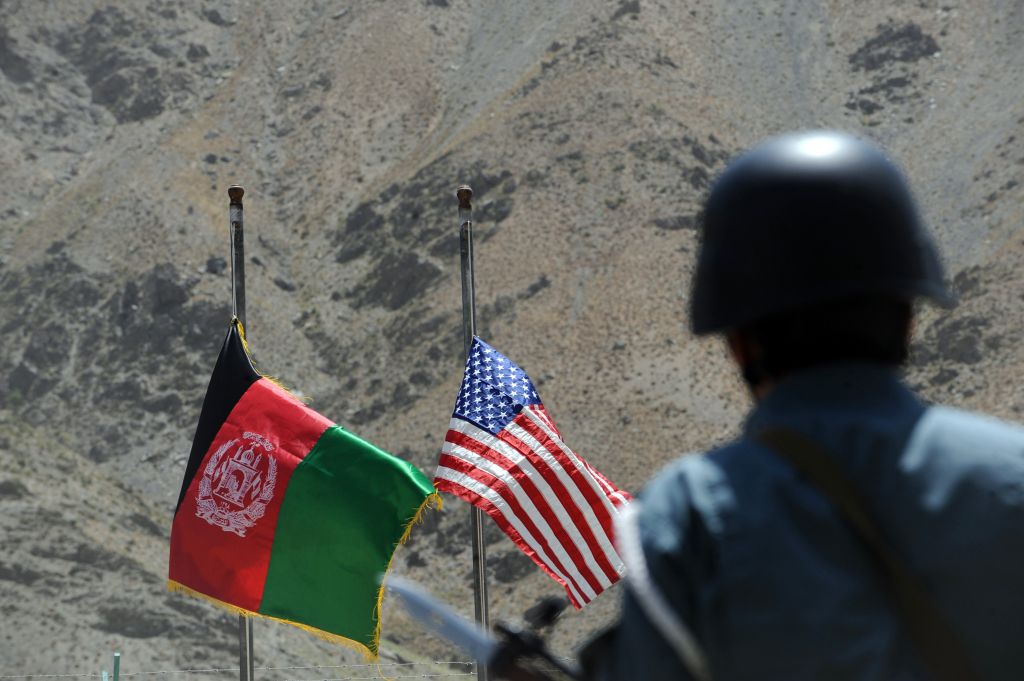The Withdrawal
After two decades in Afghanistan, the U.S. is pulling out amid increasing Taliban battlefield gains at the expense of the Afghani government. The biggest highlight of the American withdrawal operations over the last two weeks was abandoning ‘Bagram Air Base’, the main staging ground for U.S. military operations in the country. According to the Pentagon, the withdrawal of U.S. forces is currently 90% complete. Interestingly, President Biden has set a deadline of 11 September for U.S. troops to fully withdraw. This is the same date of the terrorist attacks by Al-Qaeda against the U.S. that caused a chain of reactions one of which was the war in Afghanistan.
The withdrawal sequence was put in motion when Washington agreed to withdraw negotiated last year under former President Donald Trump. In fact, the move to completely pull-out was resisted by top Pentagon generals, but Biden overruled them. They wanted to keep a larger presence to assist Afghan security forces and prevent the country from becoming a staging ground for extremist groups. As of now, the agreed-on number of American troops to stay in Afghanistan is at 650 aimed at providing security for the U.S. Embassy and Kabul airport. Moreover, despite Biden’s clear and strong stance on the necessity of withdrawal, he is continuously assuring that the U.S. support for Afghanistan would be sustained despite the pullout.
Before delving into the potential implications for the withdrawal of the U.S. on Afghanistan, below is a brief outline of key moments of the American military presence in Afghanistan.
Key Milestones of the ‘War on Terror’ in Afghanistan
- 11 September (2001)
Led by Osama Bin Laden in Afghanistan, Al-Qaeda, undertakes the largest terror attack ever against U.S. on the U.S. soil.
- The Fall of Kabul (2001)
The Afghani Northern Alliance fighters supported by the U.S. enters Kabul as the Taliban flee the city.
- Obama’s Surge (2009)
U.S. President Barack Obama approves the so-called “surge”, a major increase in the number of troops sent to Afghanistan.
- Killing Osama Bin Laden (2011)
Bin Laden is killed in an assault by the U.S. on a compound in Pakistan. Bin Laden’s body is removed and buried at sea. The operation ended a 10-year international search by the CIA and allies.
- NATO Ends Combat Operations (2014)
NATO ended its combat operations in Afghanistan and the U.S. ended “the surge”, leaving behind major forces most of those focusing on training and supporting the Afghan security forces.
- Taliban Resurgence (2015)
The Taliban launch a series of suicide attacks, car bombings and other assaults, such as on the parliament building in Kabul.
- US Signs Deal with Taliban (2020)
The U.S. and the Taliban sign an “agreement for bringing peace” to Afghanistan in Qatar. The U.S. and NATO allies agree to withdraw all troops within 14 months if the Taliban uphold the deal.
- Date for final withdrawal (2021)
U.S. forces are scheduled to withdraw from Afghanistan by 11 September 2021. However, there are speculations that the withdrawal may be complete before the official deadline.
The Free-fall into Civil War
According to reports, Afghans are becoming mentally and psychologically immersed in a civil war narrative amid the looming departure of the last U.S. soldier. Things do not stop here, in fact this view is also shared by both the government and the Taliban speaking openly about a summer of fighting before there is any chance of a genuine effort to forge a negotiated way out of violence.
Even though virtually all stakeholders in the Afghan scene are convinced that there is no military solution, but still they as well acknowledge a peaceful one. Because of this heightened public impression of an unfolding civil war in many rural areas, families are already fleeing their homes. In fact, there is possibly a huge influx of Afghan refugees into neighboring countries when violence increases. Moreover, it is no secret that violence would increase if Taliban continued its violations of the Doha agreement with the U.S. and the Afghan government. In fact, the U.S. intelligence speaks openly about the weakness of Afghan military and that the Kabul Government’s prospects for survival are not good. Also, a top U.S. commander in Afghanistan warned the country risked sliding into civil war. Currently, Taliban captured more than 100 districts across Afghanistan, encircling many cities and closing in on the capital Kabul. Amid all these Taliban gains, the Afghan President Ashraf Ghani insists the country’s security forces are fully capable of stabilizing the country. However, according to reports more than 1,000 Afghan troops fled to Tajikistan, and others seeking refuge in Pakistan and Uzbekistan to escape the fighting.
Undoubtedly, this post-pull-out sequence could mimic the previous one when Taliban re-surged gain in 2015 after the NATO and the U.S. decreased their presence. Probably, violence will intensify, and the U.S. might occasionally deploy air strikes against Taliban.
Moreover, two factors other than the power differential between Taliban and the Afghan government forces will contribute to violence: (1) Taliban gaining control over prisons of cities it gains and freeing its affiliates and fighters. This means that the already existing big power gap will continue to increase. (2) By withdrawing, the U.S. abandoned the thousands of civil Afghans who served as translators or provided other assistance to the American military. While theoretically these groups of people should be evacuated, the American administration is not moving quickly enough to protect them.
Conclusion
Civil war is certainly a highly possibly path if the status quo continues on the trajectory it is currently on. More importantly, this potential violence should be a concern to the whole world, not only the U.S. Terrorism harmed civilians from everywhere and did not discriminate. Hence, the second part of this article will look at the international relations dynamics of this withdrawal.


